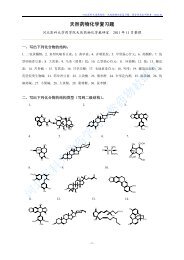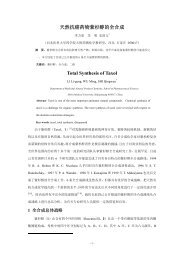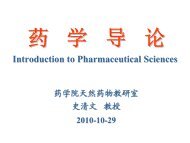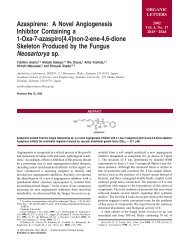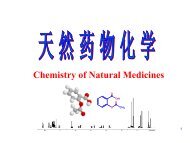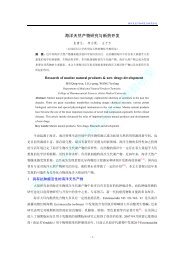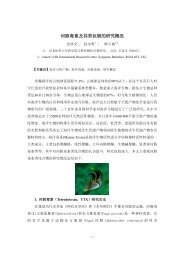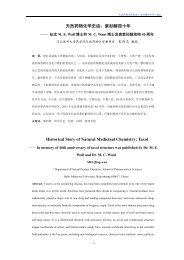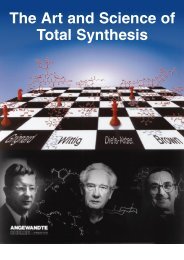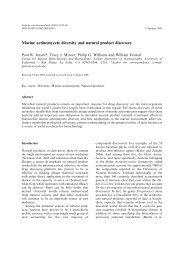Total Synthesis Highlights
Total Synthesis Highlights
Total Synthesis Highlights
Create successful ePaper yourself
Turn your PDF publications into a flip-book with our unique Google optimized e-Paper software.
The last challenge was the establishment of the (Z) alkene of the side chain. This was<br />
accomplished using the Toru protocol. Coupling of the secondary bromide with the Cs salt 12<br />
proceeded with inversion of absolute configuration, to give 13. The carboxylates of stronger acids<br />
were not sufficiently nucleophilic to displace the bromide. Aldol condensation of 13 with the<br />
aldehyde 14 gave a mixture of diastereomers, exposure of which to MsCl in pyridine delivered the<br />
requisite (Z) alkene 4.<br />
35. The Smith <strong>Synthesis</strong> of (+)-Lyconadin A<br />
The pentacyclic alkaloid (+)-lyconadin A (3), isolated from the club moss Lycopodium<br />
complanatum, showed modest in vitro cytotoxicity. A key step in the first reported (J. Am. Chem.<br />
Soc. 2007, 129, 4148.) total synthesis of 3, by Amos B. Smith III of the University of<br />
Pennsylvania, was the cyclization of 1 to 2.<br />
The pentacyclic skeleton of 3 was constructed around a central organizing piperidine ring 9. This<br />
was prepared from the known (and commercial) enantiomerically-pure lactone 4. The akylated<br />
stereogenic center of 9 was assembled by diastereoselective hydroxy methylation of the acyl<br />
oxazolidinone 5 with s-trioxane, followed by protection. Reduction of the imide to the alcohol led<br />
to the mesylate 7, which on reduction of the azide spontaneously cyclized to give, after protection,<br />
the piperidine 8. Selective desilylation of the primary alcohol then enabled the preparation of 9.



